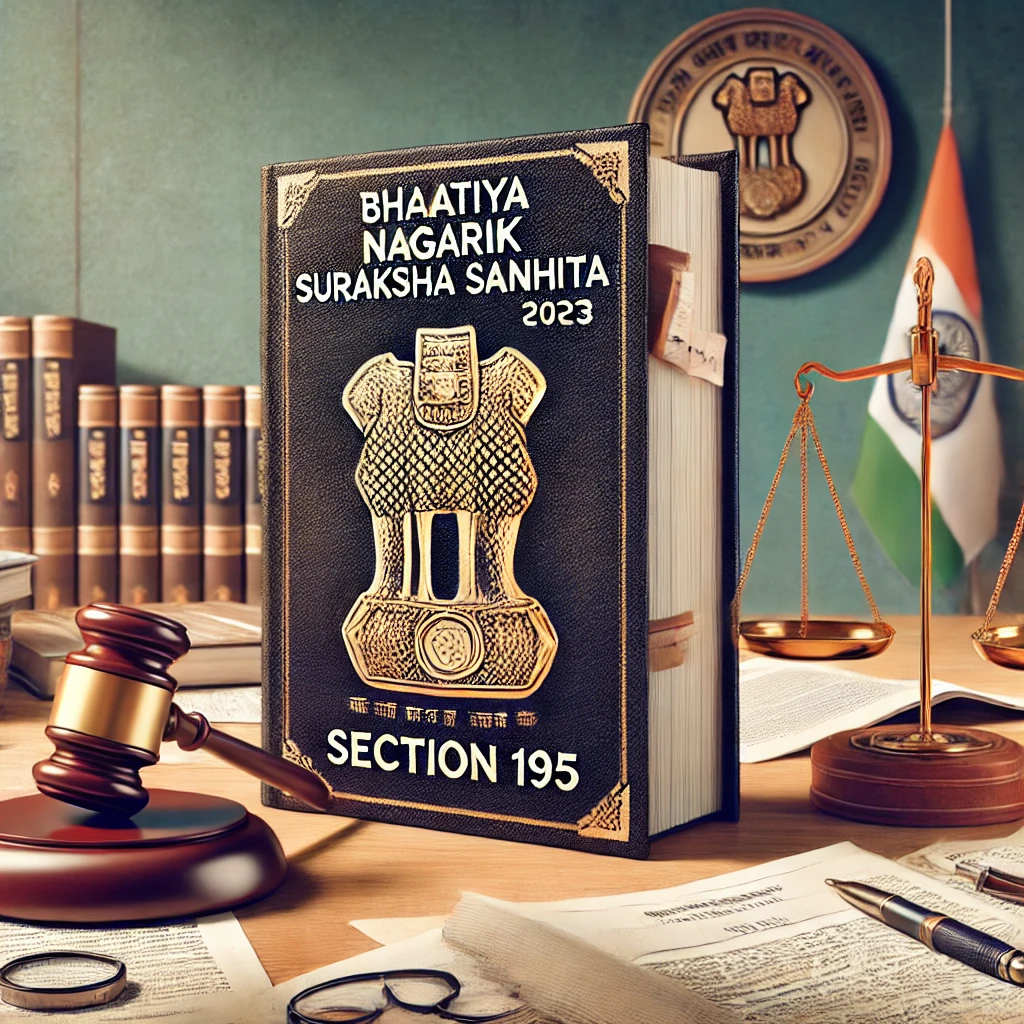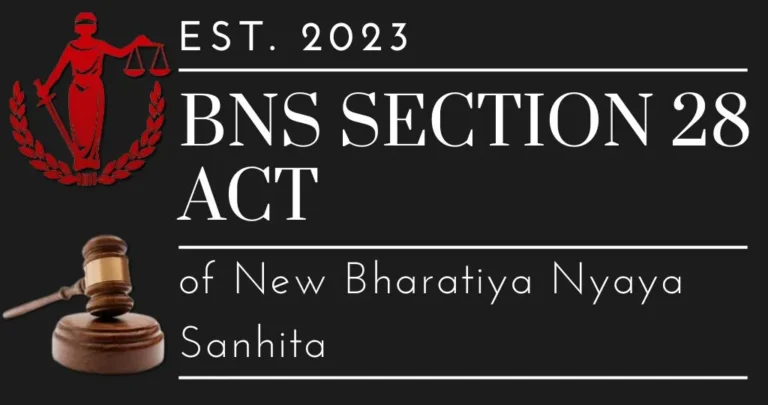
Bharatiya Nagarik Suraksha Sanhita, 2023: A Comprehensive Overview of Section 195 and Related Provisions
Bharatiya Nagarik Suraksha Sanhita, 2023: An Exhaustive Review of Section 195 and Associated Provisions
The Bharatiya Nagarik Suraksha Sanhita, 2023 replaced the Criminal Procedure Code and took effect on 1st July 2024. The intent of this new code is to rationalize and make the criminal justice system contemporary. Section 195 of the Sanhita states how people are to be called at the time of investigation in suspicious deaths as per Section 194. The current article shall study both Section 195 and Section 194 using simple terms along with examples, making the provision understandable and acceptable.
Section 195 (1): Calling people for Investigation
For More Updates & Regular Notes Join Our Whats App Group (https://chat.whatsapp.com/DkucckgAEJbCtXwXr2yIt0) and Telegram Group ( https://t.me/legalmaestroeducators ) contact@legalmaestros.com.
Section 195 (1) addresses the authority of the police to summon persons for inquiry regarding deaths within the purview of Section 194. This provision states that a police officer, during the investigation of a death, may summon two or more respectable residents of the place (witnesses) and any other person who seems to have information about the case. This implies that the police are able to call individuals who could give useful information regarding the death.
The persons called for questioning by the police were obligated by law to report for the investigation and were required to answer all questions concerning the case truthfully. There is a protection, though, for persons against self-incrimination. If, in answering a specific question, the person may be put in jail as a criminal, subjected to a penalty, or suffer forfeiture, he/she need not answer the question. This is an important safeguard under Indian law and prevents any individual from being compelled to provide responses that would potentially damage their legal position.
There are also other protections accorded to certain individuals. The law clearly stipulates that males below the age of 15, males over the age of 60, women, physically or mentally disabled persons, and persons afflicted with serious illness cannot be compelled to report to the investigation at any location other than where they live. But if such persons offer themselves voluntarily to report to the police station for interrogation, they can do so.
Example: Assume that there is a suspicious death case in a small town. A police officer investigating the case under Section 194 suspects that two neighbors may have information regarding the circumstances of the death. The officer serves a written order calling both neighbors to the investigation. They must report to the police station and respond to the officer’s questions. However, there is a neighbor who is an old man, 65 years old. The law also shields him from being forced to go to the station. He can be interrogated at his residence only unless he offers to go to the police station willingly.
For More Updates & Regular Notes Join Our Whats App Group (https://chat.whatsapp.com/DkucckgAEJbCtXwXr2yIt0) and Telegram Group ( https://t.me/legalmaestroeducators )
Section 195 (2): Attendance at Magistrate’s Court
Section 195 (2) further clarifies that if the investigation under Section 194 does not reveal any facts that disclose a cognizable offence, the individuals summoned by the police for questioning are not required to attend a Magistrate’s Court. A cognizable offence is one where the police have the authority to arrest without a warrant, such as in cases of murder or theft.
This clause makes sure that individuals are not unnecessarily brought into the court process if the investigation does not uncover any serious offense. It restricts the inconvenience and burden on the people called during the investigation.
Example: Resuming the previous example, let’s assume the police investigation of the suspicious death finds that the individual died of natural causes and there is no evidence of a criminal offense. Here, the neighbors who were called by the police do not have to present themselves before a Magistrate’s Court since no cognizable offence has been discovered. They had to cooperate with the investigation, but when it was established that no crime was done, their duty under the law ceased.
Section 194: Investigating Suspicious Deaths
As Section 195 is referring to Section 194, it is necessary to know how Section 194 works. Section 194 describes the procedure to be followed by the police in investigating deaths that are caused under suspicious conditions. When the officer in charge of a police station is informed that a person has died under suspicious conditions—like suicide, animal attack, accident, or in a case where there is suspicion of criminal force—such an officer is required to report immediately to the nearest Executive Magistrate.
The officer then has to go to where the body lies and make an inquiry. The inquiry is conducted in front of two or more responsible local citizens. The officer makes a report of the probable cause of death, stating the injuries or marks observed on the body. If the case is that of the death of a woman seven years after her marriage or if suspicion arises about the cause of death, the officer shall have the body medically examined by a competent doctor.
Example of Section 194: Suppose a woman has been discovered dead in mysterious circumstances. She had been married for five years, and her family members are suspicious that she was murdered. The police are notified and start investigating under Section 194. The police, in the presence of two locals, inspect the body and notice bruises on her arms. They draft a report and get her body examined post-mortem to identify the cause of death. Concurrently, the police also call up her neighbors, who could possibly have seen or heard something amiss, under Section 195 to help investigate.
Importance of Sections 194 and 195
Sections 194 and 195 complement each other to ensure deaths under suspicious or unusual conditions are investigated comprehensively while protecting the rights of suspects in the process of investigation. Section 194 outlines the framework for how to investigate such deaths, while Section 195 authorizes the police to call for witnesses and individuals with information that is relevant for the purpose of investigation, for their cooperation.
Section 195 protections are essential. The individuals cannot be compelled to self-incriminate, and special care is accorded to persons who are at risk—children, women, and persons with disabilities—to protect them from hardship. The legislation also provides against persons evading their legal responsibility to cooperate during investigations.
Conclusion
The Bharatiya Nagarik Suraksha Sanhita, 2023 brings vital changes to the criminal justice system in India, and Sections 194 and 195 are both a part of the investigation process in case of suspicious deaths. Section 194 outlines the procedure of how death occurring under suspicious conditions is to be investigated, and Section 195 empowers the police to call for people to aid the investigation, with a provision also for protection from self-incrimination and unwarranted inconvenience.
The purpose of such provisions is to provide a fair and proper process of investigation, balancing the need for efficient police work with safeguarding individual rights. By providing for transparent and documented investigations, the Sanhita ensures the rule of law in cases of suspicious death, and justice to the deceased and their families.






